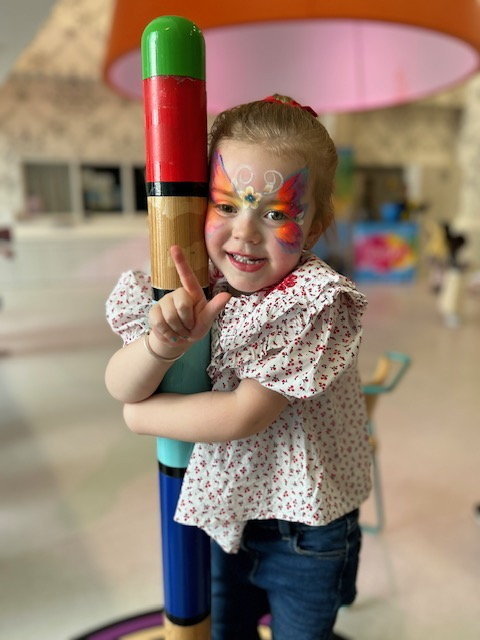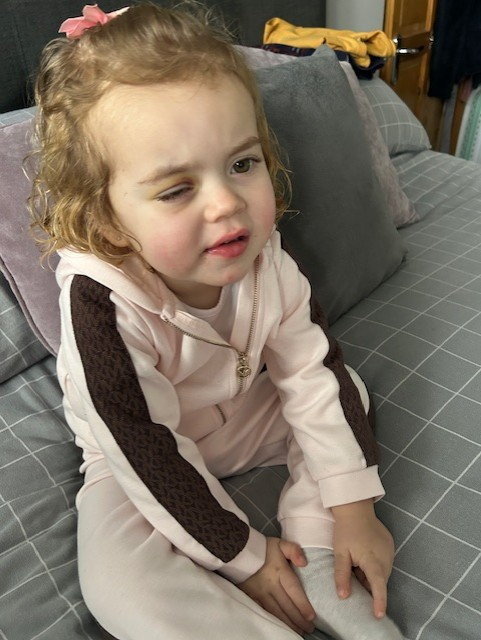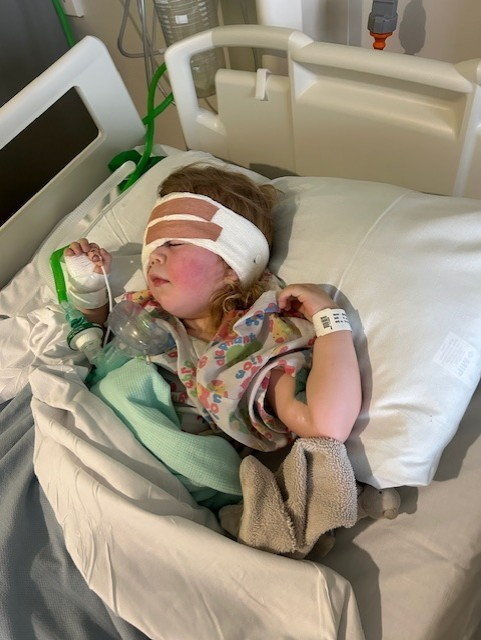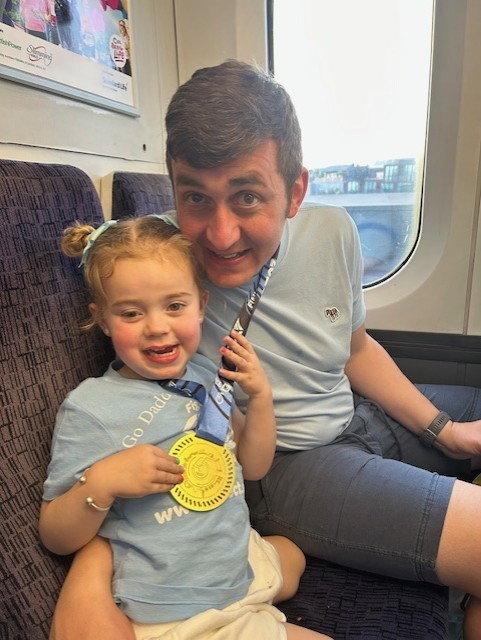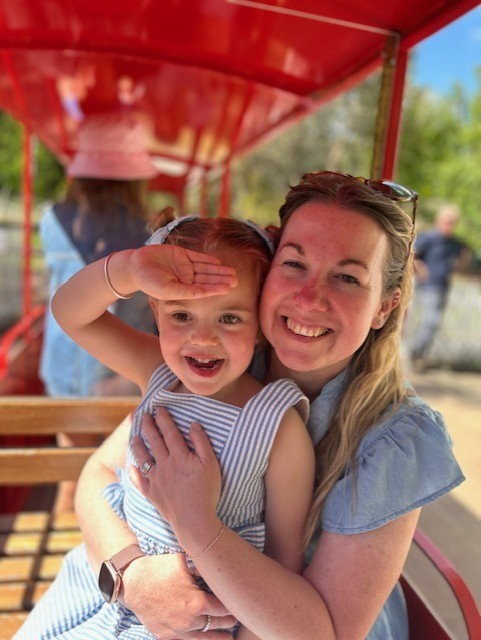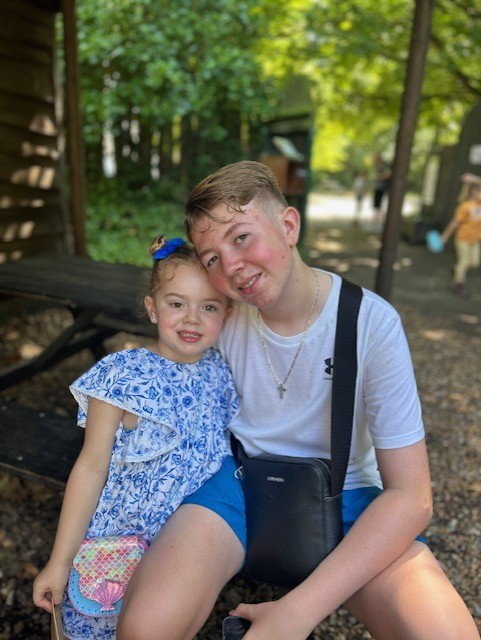WHEN little Jessy Morton first developed a red eye in November 2023, her parents had no idea it would soon have to be removed.
It initially got better with antibiotics, but when the eye started to hurt a month later, her mum Lisa Morton, 43, knew it was something serious.
An MRI at Great Ormond Street confirmed grade E retinoblastoma, the most advanced stage of a rare type of eye cancer that mostly affects young children. The only option was to get the eye removed.
“I remember GOSH asking if we were able to jump on a Zoom call,” Lisa, a local authority housing officer, from Sidcup, south-east London, said.
“They said ‘we are so sorry to have to tell you like this’.
“I was like, ‘wait what?’ I didn’t understand how this was possible.
“A month before, she was saying her eye was hurting and nothing else.
“It seemed so unreal.”
When Lisa first took Jessy to urgent care at Queen Mary’s Hospital for her eye pain December doctors were more concerned about treating her for tonsillitis – which she also had.
The week before Christmas, an appointment with the hospital’s eye clinic was booked for March 20, 2024, which Lisa believed was too far away.
In the New Year, Lisa headed to her local optician for a second opinion.
Lisa said, “We saw the optician on January 12, 2024, who made an urgent referral to the eye clinic at Queen Mary’s Hospital after she spotted something, but she was unsure what it could be.
“The doctor at the hospital was amazing. He told me he suspected either Coats disease or retinoblastoma and that someone from The Royal London Hospital would be calling me to see Jessy urgently.
“At this point, it didn’t seem real, and I don’t think I took it all in.”
On January 17, 2024, Jessy went for an ultrasound at the Royal London Hospital, but the results came back inconclusive.
A week later, Jessy headed to Great Ormond Street Hospital for an MRI scan which confirmed that she had retinoblastoma.
Lisa said: “We were called on Zoom on January 31 and given the official diagnosis of retinoblastoma.
“We were told that, as Jessy had an advanced tumour (Grade E), eye removal – called an enucleation – was the only treatment.
“This seemed unreal, and we were shocked and scared to hear our baby girl had cancer.”
Lisa and her husband, Bradley Morton, 43, told their son, Harry, aged 13, and their immediate family.
On February 7, 2024, Jessy had her right eye removed in a five-hour operation at the Royal London Hospital.
The operation went well, and six weeks later, Jessy had her first “special eye” fitted.
‘Sassy and strong-willed’
Lisa said: “Jessy’s operation went very well, and she healed amazingly, with barely any bruising.
“The Clinical Nurse Specialist at the Royal London Hospital was amazing; we went to see her before the big operation, and she encouraged us to bring our son.
“She put our minds at rest, explained how the special prosthetic eye works, and showed us one.”
Jessy had four rounds of chemotherapy before being given the call clear in May 2024.
Lisa said her daughter is “sassy and strong-willed” and due to start school in September.
She said: “Jessy is four now, and she is amazing.
“She starts school in September, and she can’t wait.
“Jessy thinks everyone has a special eye like her – she has adapted so well.
“She still isn’t comfortable when her eye is removed, but she is getting better.”
The Childhood Eye Cancer Trust (CHECT) is urging parents and healthcare professionals to be aware of the most common possible symptoms of eye cancer – a white glow in the eye in a flash photo or in certain light, and a squint.
Richard Ashton, Chief Executive of CHECT, said: “Jessy’s story shows the importance of retinoblastoma awareness for health professionals.
“We are grateful that Jessy’s diagnosis was confirmed and that she was able to receive treatment, and we’re also thankful to Bradley for taking on the London Marathon in support of our charity.”
Symptoms of retinoblastoma
Most children with retinoblastoma seem fine.
But two common signs that parents first notice in their child are that:
- They have a white glow or white reflection in the centre of their eye (pupil) – this is also known as leukocoria
- Their eyes are not looking in the same direction (a squint) – also known as strabismus
The pupil might look white, like a cat’s eye reflecting light. This is sometimes noticed in photos when a flash is used. The pupil appears white rather than the typical red colour.
Other less common symptoms might include:
- You or the school noticing your child can’t see properly
- Inflammation and reddening of their eye
- Uncontrollable movement of their eye from side to side (nystagmus)
Children do not usually complain of any pain. In very few cases, a child might be referred to a specialist children’s doctor (paediatrician) because they are:
- Not gaining weight
- Developing normally
During their tests, the abnormal retinoblastoma gene usually shows up in a blood test.


